Crypto exchange with P2P trading: Safety, Fees & Best Direct Platforms
Crypto exchange with P2P trading: Safety, Fees, and Top Platforms
Welcome to the wild west of finance. If you’ve ever wanted to move crypto directly between peers, dodge slow bank wires, or just feel that satisfying click of a completed P2P trade, you’re in the right place. But let’s get real: P2P trading isn’t all sunshine and unicorns. There are hidden traps, shady sellers, and fees that sneak up like ninjas. Still, done right, using a crypto exchange with P2P trading feature can feel like unlocking a secret level in the crypto game.
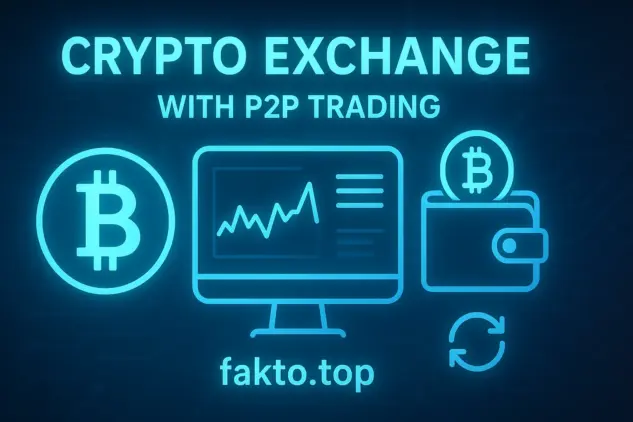
So why should you even consider P2P? For starters, it gives you direct access to fiat gateways without waiting days for traditional transfers. It’s fast, flexible, and sometimes cheaper than conventional exchanges. And yes, you can buy Bitcoin or other crypto without revealing every detail of your financial life—though anonymity comes with its own risks. Think of it as walking a tightrope: thrilling, a little scary, but incredibly rewarding if you maintain balance.
In this guide, we’ll cover the whole P2P spectrum: how to spot safe trades, how escrow systems protect you, the nuances between P2P and traditional spot trading, and the platforms that actually deliver on low fees and reliability. Whether you’re an intermediate trader curious about jumping into P2P or a newbie testing the waters, we’ll give you clear, actionable insights, without sugarcoating the risk. Ready? Let’s dive in.
Why P2P is the Future: Security and Low fee P2P crypto exchange
Here’s the deal: P2P trading is gaining traction because it puts power back in the hands of the user. No long queues, no centralized bottlenecks, no unnecessary fees that eat your profit. When I first started dabbling, I was skeptical—“How can this be safe?” I asked myself. But then I learned about escrow systems and merchant ratings, and the picture changed.
Low fee P2P crypto exchanges are not a myth. Some platforms charge almost nothing to move crypto directly, especially if you’re trading popular pairs like BTC/USD. You get to keep more of your gains, and if you stick to reputable sellers with verified histories, the risk drops significantly. Pair that with a robust fiat gateway and suddenly, P2P isn’t just convenient—it’s smart. For many intermediate traders, it’s now the preferred way to access liquidity fast.
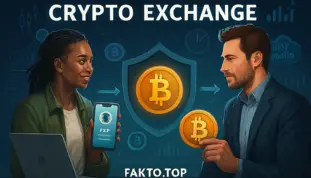
Of course, it’s not all roses. You have to pay attention to P2P trading safety. That means reading reviews, checking ratings, and never skipping the escrow. Think of escrow as your invisible bodyguard, holding funds until both sides have honored their part of the deal. Miss this step, and you’re gambling. Master it, and you’ve got the fastest, safest route to direct crypto trades.
In short, P2P is the future because it balances efficiency with control. You can negotiate rates, access multiple fiat options, and move fast—all while maintaining a level of security traditional exchanges can’t always match. It’s a little edgy, a little risky, but incredibly liberating. And honestly, if you’ve ever wanted to feel like a trader in a real market, P2P is where you start.
Anatomy of Trust: How the P2P crypto exchange escrow Works
Let’s get real for a moment. P2P trading is only as safe as the escrow system backing it. Without escrow, you’re basically handing your crypto over to a stranger and crossing your fingers. That’s not trading—it’s gambling. Escrow is the backbone of trust in P2P, holding the seller’s crypto until the buyer completes their payment. Think of it as a digital safety deposit box that opens only when both parties play by the rules.
Escrow systems vary. Some are automated and instant, some require manual verification by the platform staff. Faster isn’t always better; speed without security is a recipe for disaster. A reliable P2P crypto exchange escrow will have multiple layers: transaction tracking, automated release conditions, and dispute resolution options. Here, experience counts—platforms with longer track records and active user ratings tend to handle conflicts more efficiently.
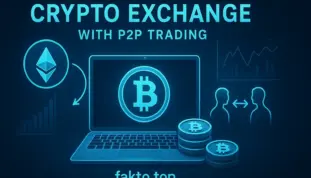
Counterparty risk is real. Even with escrow, poorly rated merchants or sloppy buyers can create headaches. A good platform mitigates this by enforcing KYC where necessary, monitoring transaction patterns, and providing transparent ratings. It’s tempting to chase anonymity, but there’s a reason reputable platforms implement checks. Don’t trust the seller, trust the escrow—it’s a mantra you’ll repeat to yourself until it becomes second nature.
Regulated exchanges often integrate escrow in a way that balances compliance with user freedom. That means you get protection without feeling boxed in by bureaucracy. You’re trading directly, but with a safety net that catches mistakes, delays, or attempted fraud. As thrilling as the P2P world is, treating it like a playground is a mistake. Knowledge, vigilance, and a well-structured escrow system turn risk into opportunity.
The P2P crypto exchange without KYC: Is the Risk Worth the Reward?
Some traders love the idea of going full anonymous. No KYC, minimal info, maximum freedom. Sounds fun, right? But here’s the rub: without KYC, you face strict withdrawal limits, fewer fiat options, and a higher chance of dealing with scammers. It’s like walking a tightrope over a pit of sharks—you can make it across, but one slip can cost dearly.
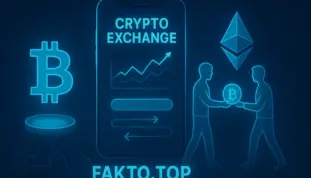
The P2P crypto exchange without KYC
Still, there’s a niche of savvy users who balance the benefits: privacy, quick trades, and bypassing red tape. If you’re disciplined, pick trusted merchants, and understand platform rules, non-KYC P2P trading can work. But it’s not beginner-friendly. For most people, regulated P2P with escrow is safer, more reliable, and ultimately less stressful. The reward is there, but only if you respect the inherent risk.
P2P vs. Spot: When to Use Direct Trading Over the Order Book
So, here’s a question that trips up a lot of traders: when should you go P2P, and when does spot trading crypto exchange make more sense? Spot trading is structured, predictable, and fast if liquidity is high. You can see the order book, know the spread, and execute instantly—it’s the clean, professional way to trade. But P2P offers something spot never can: direct negotiation, flexible fiat options, and sometimes lower fees if you play your cards right.
The primary difference lies in risk and efficiency. On a spot trading crypto exchange, the risk is market volatility and the efficiency is nearly instantaneous. With P2P, the efficiency is in accessing local fiat markets and bypassing banking restrictions, but the risk is counterparty risk—the human element. Therefore, P2P shines when you need direct access to fiat, want to avoid banking bottlenecks, or need a specific, localized payment method. For large, systematic, market-driven trades, spot trading remains the gold standard.
However, you must be extremely wary of hidden P2P crypto exchange fees—they’re sneaky. Unlike transparent maker/taker fees in spot trading, P2P costs hide in the margins. Some merchants inflate exchange rates for certain payment methods (like fast wire transfers) to cover their own liquidity or banking costs, or the platform itself adds subtle service fees under “premium processing” or complex withdrawal terms. It’s not catastrophic, but if you’re moving large sums, these spreads and hidden P2P crypto exchange fees add up quickly. Spot trading hides fewer surprises; P2P requires constant vigilance and calculation.
Ultimately, the decision is strategic. Spot trading is your standard toolkit—safe, structured, predictable. P2P is your custom gear: flexible, potentially profitable, but demanding more skill and attention. Knowing when to pull out the P2P lever can save fees, time, and stress. A little skepticism goes a long way here; assume nothing is free, check everything twice, and let the escrow system handle the messy middle.
Merchant Mindset: Becoming a Successful P2P Trader
Think like a merchant, not just a buyer. Successful P2P trading isn’t random luck—it’s strategy built on two pillars: reputation and speed. Your reputation matters more than your volume; aim for 100% completion rates and rapid response times. This allows you to climb into higher merchant tiers on platforms, unlocking lower fees and greater trust from counterparties. Merchants with high trust ratings often command a slightly better price, effectively giving them a financial edge.
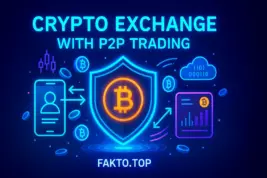
For advanced users, P2P is a potent tool for arbitrage. This means exploiting the price differences between two markets: buying Bitcoin cheaply from one P2P merchant using an uncommon payment method, and immediately selling it on the spot market or to another P2P merchant at a higher rate. This strategy demands discipline, intimate knowledge of market rates, and quick action. It rewards those who understand the liquidity differences between various fiat gateways and local payment systems. Your goal isn’t just to buy or sell; it’s to turn transaction efficiency into a reliable source of passive profit.
Know your payment methods inside out. Understand which ones carry inherent risk of chargebacks (which you must avoid) and which offer instant, irreversible settlement. When disputes happen—and they will—being calm, transparent, and having clear records of the transaction turns potential losses into learning opportunities. Treat P2P like a mini-business, and it stops feeling risky and starts feeling like opportunity.
Ranking the Giants: Which Crypto exchange with P2P trading is Truly Best?
Let’s be honest: not all P2P platforms are created equal. Some feel like playgrounds for pros, others more like beginner traps. When I first tried P2P trading, I bounced between half a dozen exchanges before figuring out which actually deliver on safety, speed, and usability. For newbies, the wrong choice can be frustrating, slow, or even risky. That’s why a careful ranking matters.
If you’re looking for the platform that balances security with the widest range of options, you’re essentially looking for the Best crypto exchange that also handles P2P perfectly. Top P2P platforms usually share some traits: a solid escrow system, clear merchant ratings, multiple fiat options, and minimal fees. User experience is crucial, especially for first-time traders—messy interfaces or unclear instructions will lead to mistakes faster than any market crash. If you’re serious about learning, stick to platforms that guide you without hand-holding but prevent disasters. We’ve analyzed hundreds of user reviews P2P exchange platforms to synthesize what truly matters: a platform that’s easy to use but hard to exploit.
Another key factor is liquidity. A P2P exchange may look perfect on paper, but if you can’t find buyers or sellers quickly, it’s frustrating. The best P2P app experience is always found on exchanges that maintain active merchant networks and support a global array of fiat currencies. Look for reviews on “P2P trading speed” and “withdrawal reliability.” Sites with consistent positive feedback indicate a platform that takes P2P seriously, not just as a gimmick. This is where centralized giants often outshine smaller, localized platforms: their sheer volume guarantees rapid transaction completion.
Fees are another story. While low fee P2P crypto exchange promises are everywhere, subtle differences can bite. Some platforms reward high-volume traders with discounts; others add hidden charges for certain payment methods. Always check the fine print. The goal isn’t just cheap trades—it’s predictable costs, so you know exactly what you’re paying each time.
Finally, trust is the final decider. User reviews P2P exchange, community forums, and even social media chatter reveal patterns you won’t see in flashy marketing. Combine all this with your own comfort level—interface, customer support, speed—and you get a realistic ranking of which P2P platforms truly stand out. For beginners, prioritize safety and clarity; for intermediates, efficiency and flexibility. By evaluating with both eyes open, you turn P2P trading into an empowering tool rather than a guessing game.
| Exchange Name | P2P Fee (Maker/Taker) | P2P Escrow System | Number of Fiat Supported | KYC Level Required |
|---|---|---|---|---|
| Binance P2P | 0% / 0% | Automated, high trust | 50+ | Basic/Full |
| OKX P2P | 0% / 0.1% | Automated, merchant ratings | 30+ | Full |
| KuCoin P2P | 0% / 0.1% | Automated, multi-tiered | 20+ | Basic/Full |
| Bybit P2P | 0% / 0.05% | Automated, dispute resolution | 25+ | Full |
| LocalBitcoins | 1% / 1% | Moderated, manual | 100+ | Optional |
Rapid Fire: Your Toughest P2P Questions Answered
The P2P market is full of complexities. Here are rapid, expert answers to the questions most often debated in forums and community chats. This section specifically addresses P2P crypto exchange review trends and critical safety issues.
Q: How can I protect myself from P2P crypto exchange scams?
A: Scams are the biggest risk. You must use the escrow every time—it is your only defense against payment fraud. Never release crypto until you have verified the funds are cleared and irreversible in your bank account, especially if dealing with large amounts. Check merchant ratings, read recent reviews, and never bypass platform rules or communicate outside the official chat. Stick to verified sellers and avoid deals that feel rushed or offer inflated rates, which is a classic red flag for P2P crypto exchange scams (NC). A moment of skepticism can save you a lot of money.
Q: Should I use a dedicated best wallet for P2P trading or the exchange wallet?
A: Exchange wallets are convenient because they integrate seamlessly with the platform’s escrow system, making trades faster. However, dedicated hardware or software wallets offer more control and security, insulating your main crypto holdings from the exchange itself. For small, quick P2P purchases, the exchange wallet is fine. For holding significant assets acquired through P2P, immediately transfer the funds to your own cold storage. This strategic separation is key. The best wallet for P2P trading (NC) is one that you fully control.
Q: What do the latest P2P crypto exchange review trends tell us about safety?
A: Recent P2P crypto exchange review (SNC) trends emphasize platform responsiveness. Reviews show that platforms with fast-acting escrow systems, clear merchant ratings, and accessible dispute support consistently outperform others. Safety isn’t just about the technology; it’s about human intervention when things go wrong. High ratings for customer service and rapid dispute resolution are the new benchmarks for choosing a reliable P2P service.
The Final Play: Mastering P2P
P2P trading is a blend of strategy, caution, and opportunity. Master the escrow, vet your merchants, know the fees, and pick your platform wisely. Treat each trade as a mini-lesson, not just a transaction. Do that, and P2P stops being risky and starts being a powerful tool for direct crypto access. Play smart, stay vigilant, and the rewards can be substantial.
Disclaimer
Let’s be straight: P2P trading isn’t a free ride. It carries unique risks, and one of the biggest is counterparty fraud. Even with escrow and ratings, there’s always a chance something can go wrong. You might hit a dishonest seller, encounter delayed payments, or run into platform glitches. That’s just the reality of trading directly with other people.
The content of this article is purely for informational and educational purposes. It’s not financial advice, investment guidance, or legal counsel. We’re here to share insights, tips, and experiences, but every trade you make is your responsibility. Don’t take this as a green light to dive in blindly.
Always conduct your own research—DYOR. Check the platform, verify the merchant, understand the fees, and never rush a trade. Approach each transaction with a cautious, critical mindset while remaining optimistic about the opportunities. P2P can be highly rewarding, but only if you treat it with respect and vigilance. Trade smart, stay aware, and let knowledge guide your decisions. That’s how you turn potential risks into manageable challenges and make P2P trading work for you.